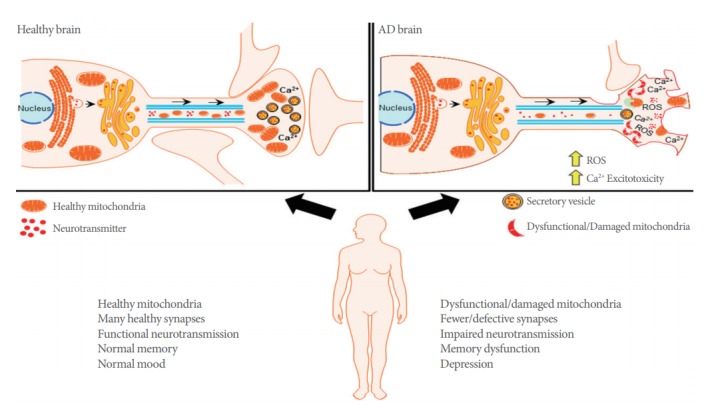Fig. 1.

Dysfunctional mitochondria results in synaptic deficits in Alzheimer disease (AD). Dynamic mitochondrial trafficking between the neuronal soma and distal axonal synapses where Ca2+ homeostasis is critical to synaptic functionality. Healthy mitochondrial trafficking is critical to adequate mitochondrial density, control of reactive oxygen species generation (ROS), and physiological synaptic function. These critical mitochondrial functions contribute to homeostatic neurotransmission and healthy synaptic plasticity. In the AD brain, mitochondria neuropathology alters mitochondrial trafficking and density. Consequently, Ca2+ buffering is impaired, resulting in aberrant ROS generation, as well as accelerated synaptic degeneration and cognitive dysfunction.
